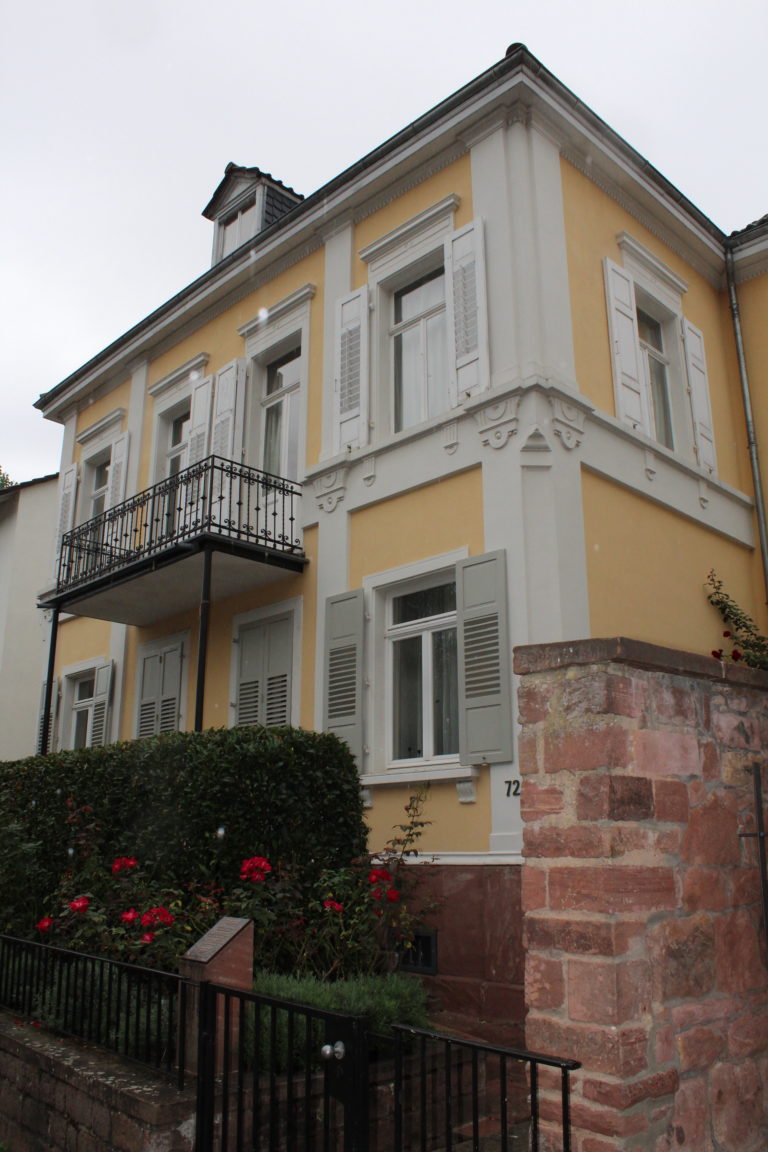 |
 |
 |
Villa Orotava was built in 1871, initially as a single-storey villa with a knee wall and vaulted cellar. In 1882, Miss Elizabeth Hallam from Tiverton bought the house and had a second floor built on it. The result was the fine building that we see today, which is reminiscent of an Italian villa in the Palazzo style with structural elements such as Tuscan pilasters above a pilaster-framed ground floor, as well as hood moulds over the windows.

Villa Orotava (Foto GG)
Access was directly through the front garden via a large flight of steps, which unfortunately fell victim to the widening of the road in 1958. Miss Hallam proudly called the stately building „Villa Viktoria“. It was not until some years later that the name Villa Orotava appeared in the address book of Handschuhsheim under the then owner Julius Benkendorff, and named after the place La Orotava in Tenerife, one of the Canary Islands. Julius Benkendorff also built an elaborate and substantial brick poultry house in the garden, which was later converted into a guesthouse and is extremely popular today.
In those days, the villas in the Handschuhsheimer Landstrasse were on the main road from Heidelberg to Handschuhsheim. Until 1912 the terminus of the tram was just a few metres away from the villa, making it a convenient location for excursions into the town.
In 1902 the Russian composer Nikolai Rimsky-Korsakov stayed in this house and met the young Igor Stravinsky here. This meeting was of great importance for Stravinsky’s musical development.
After several changes in ownership, the villa was bought by the Catholic church in 1930. It served as a residence for the Catholic nuns in Handschuhsheim until 1955. A type of cloister and shrine in the garden are a reminder of this period.
In 1994, when extensive renovation work was being carried out behind the house, a 20 metre deep well was discovered and reclaimed, and it still holds water today. This well is the only one of its kind still preserved in Handschuhsheim. All the villas along this road used to have such wells for self-sufficiency. After Handschuhsheim became part of Heidelberg, it was connected to the town water and sewage system. This made these wells superfluous and, over the years, they were filled up except for this one.